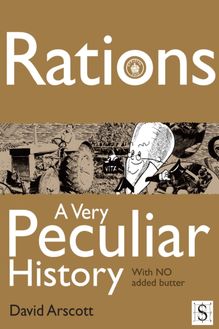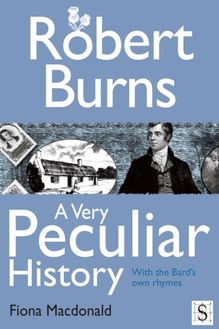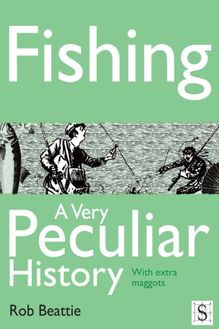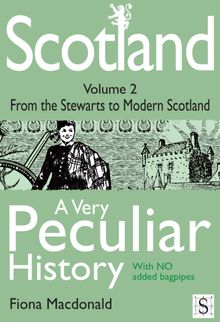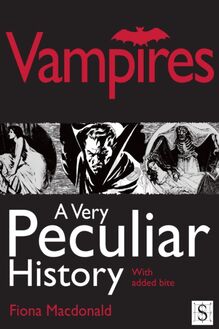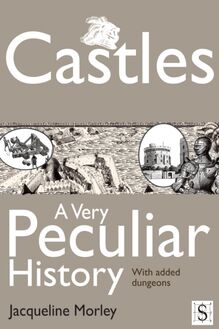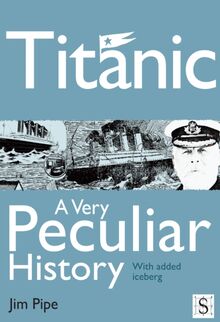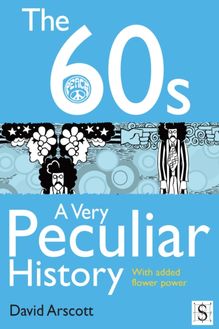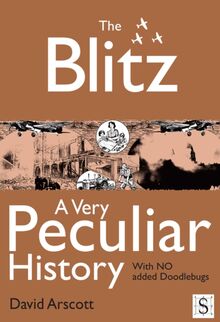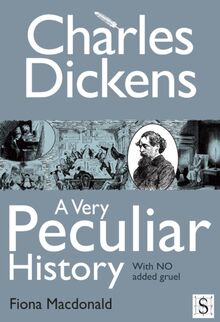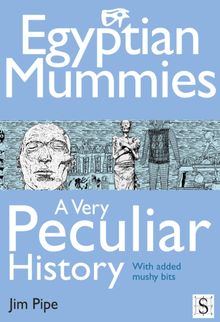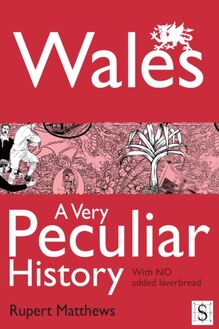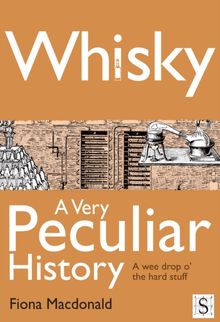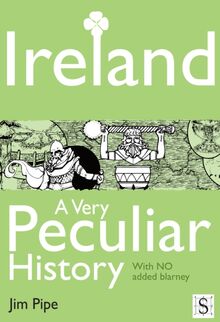Tudors, A Very Peculiar History , livre ebook
65
pages
English
Ebooks
2012
Vous pourrez modifier la taille du texte de cet ouvrage
Obtenez un accès à la bibliothèque pour le consulter en ligne En savoir plus
Découvre YouScribe en t'inscrivant gratuitement
Découvre YouScribe en t'inscrivant gratuitement
65
pages
English
Ebooks
2012
Vous pourrez modifier la taille du texte de cet ouvrage
Obtenez un accès à la bibliothèque pour le consulter en ligne En savoir plus
Publié par
Date de parution
20 janvier 2012
Nombre de lectures
0
EAN13
9781908759429
Langue
English
Publié par
Date de parution
20 janvier 2012
Nombre de lectures
0
EAN13
9781908759429
Langue
English
Title Page
THE TUDORS, A VERY PECULIAR HISTORY
With even more executions!
Written by
Jim Pipe
Created and designed by David Salariya
Publisher Information
First published in Great Britain in MMXII by Book House, an imprint of
The Salariya Book Company Ltd
25 Marlborough Place, Brighton BN1 1UB
www.salariya.com
www.book-house.co.uk
Digital edition converted and distributed in 2012 by
Andrews UK Limited
www.andrewsuk.com
Editor: Jamie Pitman
Assistant editor: Jodie Leyman
Additional artwork: Mark Bergin, John James, David Salariya, Shirley Willis, Gerald Wood
© The Salariya Book Company Ltd MMXII
All rights reserved. No part of this publication may be reproduced, stored in or introduced into a retrieval system or transmitted in any form, or by any means (electronic, mechanical, photocopying, recording or otherwise) without the written permission of the publisher. Any person who does any unauthorised act in relation to this publication may be liable to criminal prosecution and civil claims for damages.
Every effort has been made to trace copyright holders. The Salariya Book Company apologises for any omissions and would be pleased, in such cases, to add an acknowledgement in future editions.
Visit our website at
www.book-house.co.uk
or go to
www.salariya.com
for free electronic versions of:
You Wouldn’t Want to be an Egyptian Mummy!
You Wouldn’t Want to be a Roman Gladiator!
You Wouldnt Want to Join Shackleton’s Polar Expedition!
You Wouldn’t Want to Sail on a 19th-Century Whaling Ship!
Dedication
For my mother – who loves a costume drama with a high body count!
JP
Some right royal sayings
‘We are, by the sufferance of God, King of England; and the Kings of England in times past never had any superior but God.’
Henry VIII to Cardinal Wolsey, 1515
‘I will make you shorter by a head.’
Elizabeth I’s retort to anyone who was taller than her and disagreed with her.
‘I have already joined myself in marriage to a husband, namely the kingdom of England. Do not blame me for the miserable lack of children, for every one of you are children of mine.’
Elizabeth’s answer to critics who said she should marry and raise a family.
‘Let every man have his doctor. This is mine.’
Said by Henry VIII as he toasted the Dean of Westminster with a glass of wine, 1513
‘With your head and my purse I could do anything.’
Elizabeth I praises her minister William Cecil
‘Pastime with good company
I love, and shall until I die.
Grouch who list, (meaning; let people complain if they want to) but none deny;
So God be pleased, thus live will I.
To my pastance, (pleasure)
Hunt, sing and dance,
My heart is set;
All goodly sport
For my comfort – Who shall me let? (prevent)’
First verse of a song attributed to Henry VIII
‘The most obstinate woman that ever was.’
Thomas Cromwell writing about Mary I, June 1536
‘I’m reasonably sorry.’
Philip II of Spain, on hearing that his wife Mary I had died.
‘When anyone speaks of her beauty, she says she was never beautiful. Nevertheless, she speaks of her beauty as often as she can.’
André Hurault, Sieur de Maisse, French ambassador to Elizabeth’s court, 1597
Putting Tudors on the Map
INTRODUCTION: What is it about the Tudors?
When it comes to drama, few royal families can match the Tudors. Want betrayals and back-stabbing, intrigues and scandals, bloody rebellions and gruesome executions? It’s all here, against the glamorous backdrop of grand castles and lavish palaces, sumptuous feasts, gorgeous clothes and spectacular tournaments.
And what a cast of characters! Our tale begins with dark horse Henry VII, the rank outsider who battled against the odds to seize the crown and – even trickier – hold on to it. All that hard work paved the way for the legendary excesses of his son, Henry VIII, the larger-than-life monarch with a twinkle in his eye and a swagger in his step, who famously beheaded two wives and divorced two others. Henry’s son and heir, Edward VI, may have been nicknamed the ‘godly imp’ for his saintly behaviour, but the fiendish antics of powerful nobles such as Edward Seymour and John Dudley ensured there was rarely a dull moment during the boy king’s short reign – or after, when Lady Jane Grey ruled the country for a few brief days. The turmoil continued under ‘Bloody’ Mary, who undid everything her father had done and had hundreds burnt at the stake in the process. No less determined was her younger sister, Elizabeth I, ‘Good Queen Bess’, who defeated the mighty Armada and ruled over a colourful court of writers, poets and explorers.
The Tudors
Henry VII
Born 28 January 1457
Reigned 22 August 1485 – 21 April 1509
Henry VIII
Born 28 June 1491
Reigned 21 April 1509 – 28 January 1547
Edward VI
Born 12 October 1537
Reigned 28 January 1547 – 6 July 1553
Lady Jane Grey
Born 1536/7
Reigned 10–19 July 1553
Executed 12 February 1554
Mary I
Born 18 February 1516
Reigned 19 July 1553 – 17 November 1558
Elizabeth I
Born 7 September 1533
Reigned 17 November 1558 – 24 March 1603
In total, the five Tudors ruled for just 118 years. Yet some 500 years later, they remain among the best-known and most easily recognised of English monarchs – not least because Henry VIII and Elizabeth I left behind a string of splendid (and very flattering) portraits. The Tudors also did their best to spread the word that they were a bit special: poets such as Edmund Spenser linked them to legendary British kings such as Arthur, and Cadwaladr of Wales. (Despite this, the Tudors generally played down their Welsh roots in order to emphasise their right to the English throne. Mary, for example, was known as ‘the daughter of Henry VIII’, rather than Mary Tudor. )
Do the Tudors live up to their own hype? They were able, cunning, ambitious and ruthless. Henry VII greatly increased the power of the king and parliament by cracking down on lawless nobles, while Henry VIII’s break with the Catholic Church was a turning point in English history. Elizabeth I’s reign brought peace, stability, and a sense that England was a world power. England’s merchants prospered under Tudor rule. The country grew into a great naval power while its sailors discovered many new lands. The court became a centre for the arts and sciences, and the works of William Shakespeare and others are still enjoyed today.
Enjoy the drama. But don’t forget: for all their temper tantrums, excesses and cruelty, the Tudors knew how to get things done.
CHAPTER ONE: The birth of a dynasty
For those who like their history bloody, the Tudor age began on 22 August 1485 when ambitious Welsh nobleman Henry Tudor, 2nd Earl of Richmond, thrashed King Richard III of England at the Battle of Bosworth Field in Leicestershire. As one dynasty kicked off, another ended – after Henry’s victory, England waved goodbye to the Plantagenets who had ruled the country since the 12th century.
In Tudor times, the battle was portrayed as a clash of the titans: Saintly Henry versus Wicked Richard. But in real life there were few saints in the dog-eat-dog world of medieval politics. The battle was won by a dirty trick played by knavish noble Lord William Stanley, who watched and waited from the wings with his 8,000 troops before deciding which side to join. When Henry rode towards Stanley asking for his support, Richard took a gamble. He charged down the hill at Henry’s bodyguard, with 800 knights thundering along at his side.
Richard hoped to end the fight quickly by killing Henry. He hadn’t bargained on the foul play of Lord Stanley, who suddenly attacked Richard from the flank. No wonder Richard was heard shouting, ‘Treason, Treason!’ Within a few minutes the battle was over. Though Richard almost cut his way through to Henry, he was now surrounded. Toppled from his horse, the last of the Plantagenets continued to fight on foot until he was cut down by Welsh spearmen.
The horrible hunchback?
King Richard III, Henry’s opponent at Bosworth, is often depicted as a cruel, ugly villain, a ruthless tyrant. This all stems from the bad press he got in Tudor times from the likes of William Shakespeare and Sir Thomas More, when the royal court wanted to show how evil Richard was compared to Henry VII. But can we believe them?
•Richard was painted by Tudor artists as a hunchback with a withered arm and a limp. But these pictures were painted long after Richard’s death – there’s no sign of these deformities in earlier portraits or in records written at the time.
•Richard’s famous line ‘A horse, a horse, my kingdom for a horse!’ was probably made up by Shakespeare, who wanted to show him as a coward. But brave Richard died fighting with a sword in his hand.
•OK, so Richard did grab the throne from his young nephew Edward V. But far from being a tyrant, Richard introduced many new laws that improved life for his subjects.
•In the traditional story of the murder of Edward V and his brother – the ‘Little Princes in the Tower’ – they’re smothered to death by three of Richard’s men, then buried in a shallow grave at the foot of a flight of stairs. The jury is still out on this one. Richard had already had the law changed so they couldn’t come to the throne, so he had no need to kill them.
•Richard was also blamed for the deat
